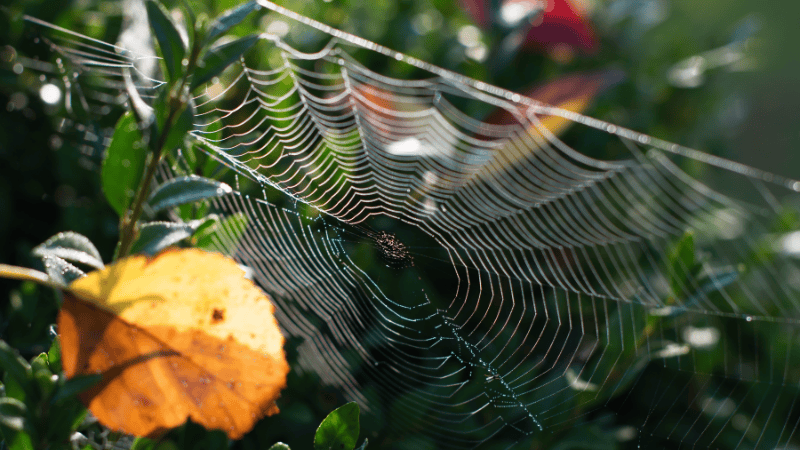Comments We Hear During Bat Season
Class Is in Session: Bat Exclusion Misconceptions

There Are Some Misconceptions out There Regarding Bat Exclusion
Pest-End has provided homes and businesses with pest and wildlife management solutions since 1977. Since our inception, we've seen substantial change and innovation within our company and industry over the last four and a half decades. However, some things have remained status quo, one being the general public's misconceptions about bat exclusion.
While it's easily understandable why many view professional pest and wildlife management as the enemy of wildlife conservation, bats specifically, that couldn't be further from the truth! With the second surge of bat activity upon us here in New England, the same conversation arises among concerned individuals (rightfully so!) regarding bats and exclusion methods. So, we thought we'd take the opportunity to educate and provide some clarity as we make our way through the remainder of bat season!
"Bats are endangered. Why are you killing them?!?"
Over 200 bat species around the globe are considered threatened species (critically endangered, endangered, or vulnerable) by the International Union for Conservation of Nature (IUCN). Unfortunately, that list includes one of two species most commonly found in the Northeast. The Little Brown bat, widely found throughout New England, is currently endangered, and the second common species found in New England is the Big Brown bat. Conservation efforts are a top priority worldwide, and the same is true for Pest-End, right here in New England.
While our job is to control pests and nuisance wildlife, Pest-End, and most other reputable companies, understand the importance of protecting bats and only practice non-lethal exclusions. Professional exclusion methods are both bat-beneficial and effective in getting and keeping these tiny beneficial wonders outdoors where they belong.
"What exactly does bat exclusion entail?"
In the simplest form, bat exclusion utilizes existing entry points on a structure to allow bats to continue to exit a structure but denies reentry. Common entry points on homes include chimneys, cracked siding, soffits, and damaged flashing, among many other options. Bats can squeeze through openings the size of a quarter, and it doesn't take much effort to find even the most minor weaknesses in a structure.
Bat exclusion starts by identifying the current entry points and locations that may become one soon. One-way doors and netting allow bats to drop down safely and out of entry points as they usually would but prevent them from getting back inside. Once all primary entrance points are equipped with one-way doors or netting, minor cracks and crevices are sealed with caulk or mesh to prevent reentry. After about a week, the bats will give up on trying to regain access and begin to relocate.
"It's illegal to perform exclusions!!!"
We often hear this, and it's not an entirely false statement! It's all about the timing! Many states enforce laws and regulations dictating when professionals and homeowners can perform bat exclusions, and controlling the timing of exclusions protects against further detrimental effects on populations.
While each state varies, most permit exclusions during early spring (May-ish) and late summer into fall (August-October). These windows of time work around the birthing season to prevent endangering flightless pups roosting inside a structure. Come late summer and early fall, bat pups have taken flight and can safely exit structures through one-way doors. Juvenile bats that are just learning to fly are usually to blame when people find a single bat trapped in the primary living spaces of their home.
Fish and Game and state government websites are the best resources to find up-to-date information on bat removal laws and regulations for your state.
"Just put up bat houses!!!"
We at Pest-End are all in favor of utilizing bat houses. However, if you have a roosting colony in your attic, bat houses alone will not cut it. We often recommend using bat houses in conjunction with an exclusion service. When bats leave a structure through one-way doors and cannot reenter, strategically placed bat houses become a more appealing option!
You can purchase wooden bat houses at most local hardware stores and online websites. If you're feeling more ambitious, you can build your own! Check out these plans on Bat Conservation International.
"I love bats and don't care if they want to live in my attic!"
We love bats too! But bats living inside a structure pose damage and even health risks. Those risks mainly stem from bat poop, formally referred to as bat guano. Over time bat guano collects and, when dried, can release microscopic spores that can cause histoplasmosis if inhaled. Collected amounts of bat guano commonly cause insulation and structural wood damage, resulting in needed replacement and repairs.
While we can't stop anyone from turning their home into a bed and breakfast for bats, we wouldn't recommend it either!
"Professional bat removal is too expensive."
Pest-End prides itself on being a family-owned local business that provides quality and effective services at a competitive price. If you are experiencing bat activity in your home or business, the first step is to schedule a complimentary on-site inspection. Our wildlife specialists can access your property and provide a free service estimate.



